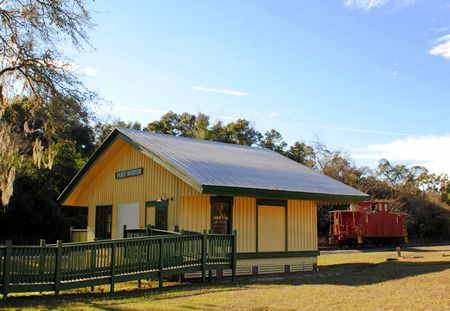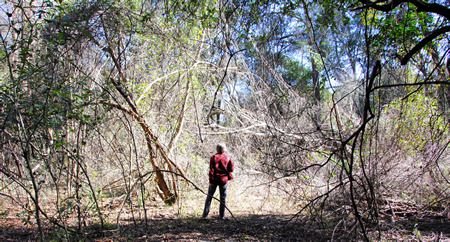I have had an obsession with abandoned railroads for just
about as long as I can remember. You may have noticed that even though this
blog is fairly young, I’ve written about railroads a good bit already. As a
child growing up in Columbia City, I used to be convinced that I could hear the
ghostly echo of the train running between Lake City and Fort White, which used
to run through Columbia City – even though those tracks had been pulled up
before I was even born.
During Fort White’s boom years in the late 1800s to early
1900s, trains connected Fort White to Lake City and Live Oak to the north and
northwest, and to High Springs and Gainesville to the south. During that time,
the population of the community swelled to roughly 2000, and was supported by
the mining of phosphate, the collection of turpentine, and the growth of cotton
and oranges. The trains bustled in and out of town, carting away the goods
which funded the community. However, as with many booms, this one went bust.
The phosphate mines depleted, extreme freezes killed off the orange orchards,
and boll weevils destroyed the cotton. People moved away, the rail lines fell
silent, and eventually the rails were removed. Parts of the rail line were
converted to a rails-to-trails path, the O’Leno to Ichetucknee trail, although
other sections remain overgrown and wild.
The old Fort White train station has an interesting
post-rail history. After the railway line became inactive, the physical train
station was sold to a farmer in the nearby town of Branford, who moved it to
his property and used it as a barn in which to store hay. A picture of the
station in its hay-storing capacity can be seen here. Twenty years later, in 2002, the farmer sold it back
to the city of Fort White and it was returned to its original location. An
image of the station after it had been returned to its original location but
before its restoration can be seen here.
It has since been refurbished, and is now used by the Fort White Chamber of
Commerce. Additionally, a short stretch of track with a caboose (which had resided at the Kindergarten Center in Lake City for many years) have been
installed.



I like to browse real estate listings. Last January, I
discovered that roughly two acres of woodland bordering a stretch of the old
Fort White to High Springs segment of abandoned railroad were for sale for an
absurdly cheap price – slightly more than $3k. The catch? The property was landlocked,
AKA inaccessible by car and without a minor bit of on-foot trespassing.
Apparently at some point (during the housing boom, no doubt) someone had
planned to subdivide the area, and had sold plots to various people, with plans
drafted for access roads to reach said plots. But as that boom, too, went bust,
the area was never subdivided, and the planned roads to access the various
properties were never built. A bit of trespassing would be required any time
anyone wished to access this land, which had been foreclosed on and was bank
owned.

The property in question; the diagonal bit of land is the former railroad bed.
I was convinced that if I made an absurdly low offer, the bank would
accept. I mean, who else would want to own a piece of inaccessible woodland
along an abandoned railroad? I convinced my mother and her boyfriend to
accompany me to the property. We had to park at the end of dirt road and walk
through some woods of dubious ownership before reaching the abandoned railroad
bed. We then had to trudge down the bed for a good ten minutes before we got to
the actual lot in question. It was glorious overgrown woodland, and I imagined
erecting a faux train station along the old line – and a million other fantastical
ideas – before my mom talked me out of it. Alas.

Don't mind us, we're just looking at real estate.

At some points the railroad bed was quite overgrown.
(That's my mom, btw.)

Other parts were much easier to walk.


Me, at the property in question.

Would you happen to know the location of the water source that they would use to fill the train boilers there in Fort White? Thanks -K
ReplyDelete